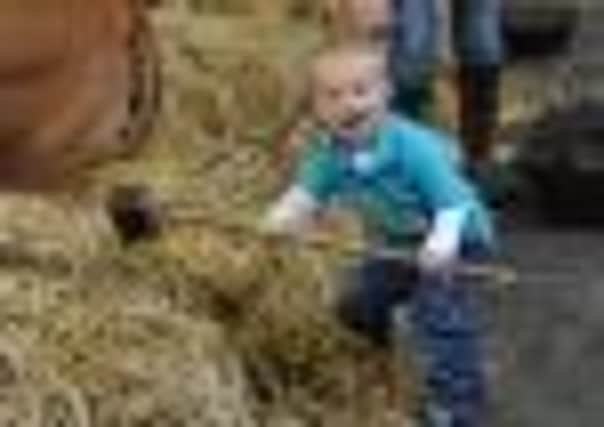Down on the farm - More to the Royal Highland Show than meets the eye


This year’s Royal Highland Show will be the first he has directed from start to finish, having joined in April last year. It will also be the last for show manager David Dunsmuir, who is stepping down after 15 years at the helm.
Then there is the small matter of the £30 million masterplan for a massive expansion and overhaul of the Ingliston site, with the revamp’s first phase – a 1000ft, tree-lined boulevard leading to the site’s entrance – given the green light in April.
Advertisement
Hide AdAdvertisement
Hide AdBut when you are in charge of the “greatest show on earth”, what is there to be nervous about?


As the doors open today for the four-day show, Mr Hutt is in no doubt that it will continue to go from strength to strength and build on record-breaking visitor numbers – nearly 183,000 came last year,
He insists the event’s ever-expanding scope will be key to its continued popularity as it embarks on the next stage of its 52-year history.
“The challenge is to remain relevant,” he says. “The members of the Society could say, right, we will remain a club and have this very formal industry event for us to enjoy. But we have to make sure the appeal of the event is much broader than that.
“With typical Scottish understatement, we have titled it the greatest show on earth. I think I would sum that up by saying there’s something here for everyone.
“We want to allow business people to achieve their aspirations and the one thing we always aim to showcase is innovation. Some is agricultural, but the scope is much broader.
“There’s renewable energy, for example. That area of the show has grown massively. This year we’ll be showing the renewable elements that are being developed all over Scotland today, from turbine manufacturers to ground source heat pumps.
“But even if you’re not interested in those things, you’ll be able to see them in a different setting and in a way that might impact directly on your own life. We had a stonemason exhibiting last year and there was a young lad who was so amazed by it he went on to become an apprentice.
Advertisement
Hide AdAdvertisement
Hide Ad“Whether you’re a real foodie, or interested in clothes, art, whether you want to have a high culture day or a low culture day, there will be something for you.”
From a countryside action and entertainment area with its own loch to specialist shopping zones selling quad bikes and spa baths, the 2012 event is more diverse than ever. For most, of course, the Highland Show means farm animals and combine harvesters.
Show chairman Clark Stewart is also a livestock exhibitor who has reared cattle and sheep at his farm in Fife since 1947. He agrees the event’s agricultural element is essential but says its importance extends beyond the millions of pounds worth of business generated by farmers.
“It’s the biggest social event of the year for the farming community in Scotland, certainly,” he says, “but the animals – the sheep, cattle, horses and goats – are an attraction for everyone.
“There are something like 23 different breeds of sheep and a selection of goats at the show – in fact, there’s a marquee for the goats and you can’t get into it for kids on the Saturday and Sunday. The machinery is an experience in itself. People have no idea how much these machines cost. If you ask them, they’ll maybe say three, four thousand pounds. But they can cost up to £200,000.”
He adds: “I think the show opens people’s eyes. It gives them an insight into the countryside as a working environment – and they learn about where their food is coming from.”
For Angela Davidson, 42, an artist from Insch in Aberdeenshire, who will be exhibiting her paintings of prize bulls for the ninth year, the show’s appeal lies in its combination of diversity with the authentic sights, sounds and smells of the countryside.
“It was so noisy and there was the smell of the cattle,” she says of her first year as an exhibitor. “We loved walking down the cattle sheds, the noise of the tractors – those are the things that struck me and it’s why I thought my paintings would fit in.
Advertisement
Hide AdAdvertisement
Hide Ad“Even then I was surprised by how diverse the stands were. There was an antique stand, for example, and it was brilliant to see all the shopping stands selling really unique stuff.
“But it’s an agricultural show first and foremost. It’s an event that has remained true to its roots and that’s why I think it has continued to grow through the years.”